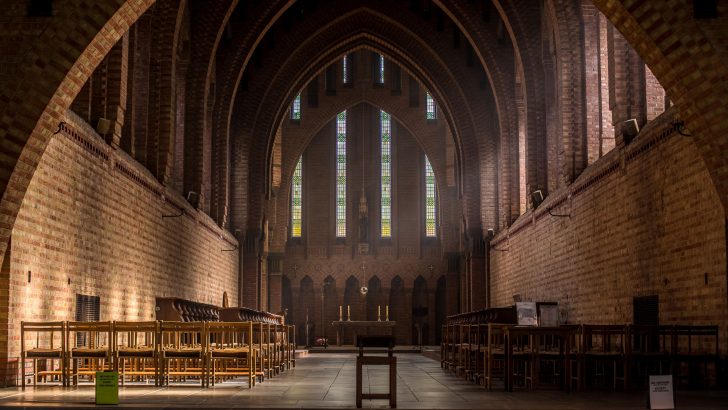The Notebook
Fr Bernard Healy
I try to visit the Isle of Wight for a few days every year. I sometimes joke that with its faded Victorian seaside resorts, relaxed way of life and quaint country villages that it’s a chance to take a short holiday in the 1950s. However, when I visit, I’m usually putting myself in touch with a tradition that goes back much further.
I first visited the island as a seminarian. A friend was trying his vocation at Quarr Abbey, a striking Benedictine monastery built of red Belgian brick that mingles traditional monastic architecture with exotic Moorish and Byzantine flavours.
It served as a refuge for the French monks of Solesmes who fled an anti-clerical French government in 1901.
When they returned to France in 1922, they left behind a small community that became an independent monastery in 1937. During that visit I was urged to walk the three or so miles to St Cecilia’s Abbey so that I could hear the nuns there sing Evening Prayer. I was captivated by the beauty of their Gregorian chant.
That was over a decade-and-a-half ago, and I’ve made a point of trying to make my annual retreat in monasteries of Benedictine men whenever I can. There is something about these oases of prayer and work that help put me back ‘on track’, and whilst I know it’s not my calling, I always draw strength from these monastery visits.
Contact
I also keep up contact with the Benedictine nuns in St Cecilia’s. I am fortunate enough to have three friends in the community and a couple of hours conversation with them can seem almost as good as being on retreat. This year when I visited I got to celebrate Mass for them – my clumsy Latin jarring with the fluidity of their chant – and then to talk with my friends in one of the visitors’ parlours.
One of the mistakes that the world makes is in thinking that the restrictions of enclosed monastic life must lead to an impoverishment of those who experience it. I have found the opposite to be the case.
Even though the scope of the nuns’ life seems narrow, I have found that the stability within which they live gives my monastic friends a particular depth of insight. When I meet them, I meet wisdom, prayer, common sense and joy. There is a richness in the Christ-centred life that causes the souls of those with the monastic vocation to flourish.
They challenge me to remember that prayer, silence and fraternal love are foremost amongst those tools by which Christ gradually shapes us; I know that their vocation enriches mine and strengthens the Body of Christ as a whole.
***
I was once speaking to an eminent Jesuit Church historian about the future of his order. The small level of growth of the Jesuits in Africa and Asia was dwarfed by the huge decline in membership in Europe and the Americans.
“Oh,” he expostulated. “I’m not worried about the Jesuits! So what if we die off? The Church did without Jesuits for a millennium and a half. Now, if we were running out of Benedictines, then I think the Church should be worried.”
***
The loss of contemplative life proves so costly for some
As Vatican II explains, even though contemplatives live at a distance from others they are united with us all in the heart of Christ and spiritually work with the entire membership of the Church (see Lumen Gentium 46)
Eduard Habsburg, Ambassador of Hungary to the Holy See, recently wrote an article entitled ‘They Did Nothing but Pray’ for the website of the magazine First Things. In it he laments the actions of his ancestor the Holy Roman Emperor Joseph II who, in 1782, decreed the closure of over 100 contemplative religious houses on the grounds of their “uselessness”. The Emperor wanted a more rational and practical kind of faith, and a Church where his ‘enlightened’ writ was law.
Further waves of forced closures would follow over the coming decade, meaning that not a single contemplative house remained, and most religious houses with active apostolates were likewise dissolved.
Ambassador Habsburg describes what was lost: “The enclosed and protected environment, with its total concentration on prayer, sacrifice, spirituality, great simplicity, purity and the contagious cheerfulness of the sisters behind their grilles – all this is infinitely valuable and easily damaged.” Could the loss of contemplative life two centuries ago explain why Austria is less in touch with its Catholic roots than some of its European neighbours?


 Interior of Quarr Abbey
Credit: Marie Line Burguiere
Interior of Quarr Abbey
Credit: Marie Line Burguiere 